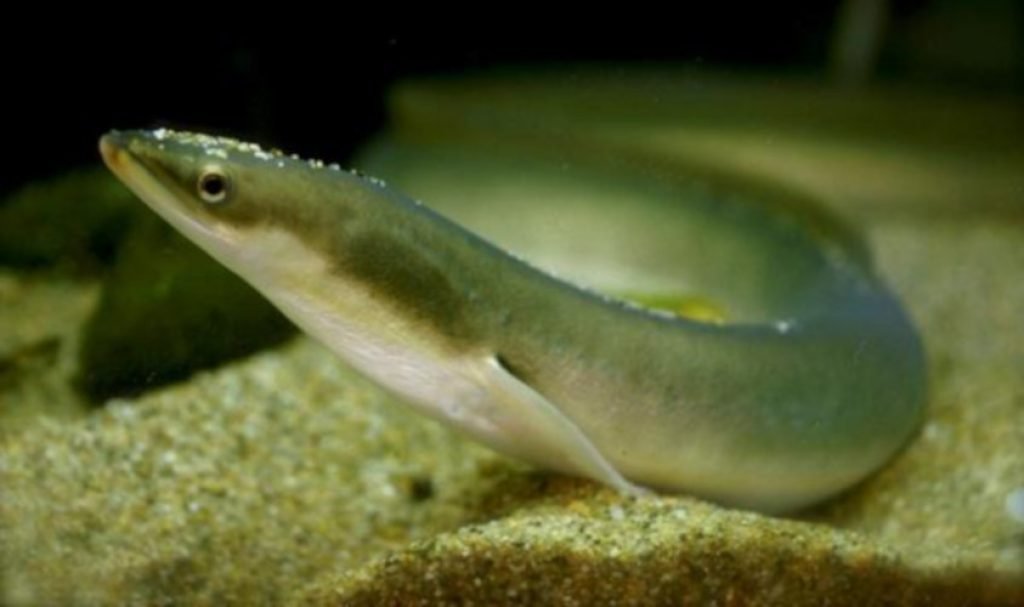In an extraordinary revelation from the world of marine biology, Japanese eels have been observed performing a remarkable escape maneuver that has left researchers stunned. In a groundbreaking study, scientists in Japan captured, for the first time ever, how these slippery creatures manage to free themselves from the stomachs of predatory fish. The eels, instead of becoming easy prey, wriggle their way through the predator’s gills and make a daring escape. This astonishing feat showcases the ingenuity of these creatures and provides new insight into predator-prey dynamics.
The Japanese eel’s Unbelievable Escape Route
Japanese eels, specifically juvenile Anguilla japonica, have developed an incredible survival tactic. Once swallowed by predatory fish, such as the dark sleeper (Odontobutis obscura), these small eels don’t accept their fate. Instead, they perform a nearly miraculous escape by backing up through the predator’s digestive tract and slipping out through the gills.

Researchers, using X-ray videography, documented this astonishing behavior in real time. Their findings, published in Current Biology, mark the first recorded evidence of such a daring escape from inside a predator.
A Scientific Breakthrough: How It Was Captured
Before this study, it was only hypothesized that eels could escape through their predator’s gills. The researchers initially believed that the eels might exit through the mouth of the fish. But what they discovered was far more complex and surprising.
In a year-long study, scientists injected juvenile eels with barium sulfate, a contrast agent, allowing them to track the eels inside the stomachs of dark sleeper fish using X-ray video. Of the 32 eels swallowed whole, 13 managed to wiggle their tails through the fish’s gills, with nine making a full escape.
Lead researcher Yuuki Kawabata, an associate professor at Nagasaki University, expressed amazement at the eel’s ability to navigate the predator’s body. “We were absolutely astonished when we saw the eels backing up through the digestive tract,” he said. “It wasn’t something we expected to witness.”
A Close Look at the Japanese eel’s Great Escape
Once inside the predator’s stomach, the eels exhibited various behaviors in their fight for freedom. Not all of the eels made a direct attempt to escape through the gills immediately. Eleven eels swam in circles along the stomach wall, possibly searching for an exit. Five of these eventually found their way to the gills.
The eels’ method of escape was both precise and powerful. By inserting the tip of their tail through the gills and then pulling themselves backward, they managed to free their entire bodies from the predator.

This unique ability to reverse their way out of the predator’s digestive tract speaks to the impressive survival instincts of the eels. Their small size and slippery bodies allowed them to complete the maneuver without harming the predatory fish. In fact, after the eels’ escape, the fish showed no signs of distress and continued their normal behavior.
Could This Behavior Occur in the Wild?
While these observations were made in a controlled laboratory environment, researchers believe this phenomenon likely occurs in the wild. The frequency of the behavior during the experiments suggests that Japanese eels use this method when faced with predatory threats in natural habitats.
Eels are frequently preyed upon by various larger fish, and the ability to escape from inside a predator could be crucial for their survival. The research team suspects that the eels may have evolved this behavior as an adaptive response to their environment.
What Makes Some Eels Better Escape Artists?
Interestingly, not all eels were successful in their escape attempts. This raises new questions about the factors that influence an eel’s ability to perform this incredible maneuver.
The research team is now curious to explore what physiological traits, such as muscle strength or behavioral patterns, make certain eels better at escaping than others. Another major question is whether this behavior is unique to Japanese eels or if other eel species also possess similar escape tactics.

“We’re fascinated by the possibility that other eel species might exhibit this behavior,” Kawabata noted. “Understanding the differences in escape success rates between individuals could reveal new insights into the evolutionary pressures these animals face.”
What This Discovery Means for Marine Biology
This discovery provides scientists with valuable information about predator-prey interactions, as well as the evolution of escape strategies among prey species. It also opens up new research pathways into how eels, and potentially other marine animals, have developed these survival mechanisms over time.
The findings contribute to a broader understanding of how species adapt to environmental challenges, with the Japanese eel serving as a striking example of resilience and ingenuity in the animal kingdom.
Conclusion
The ability of juvenile Japanese eels to escape from their predators in such a dramatic fashion is a testament to the complexity and adaptability of nature. This breakthrough study, capturing these daring escapes via X-ray, not only expands our knowledge of eel behavior but also raises important questions for future research.
As scientists continue to uncover more about these remarkable creatures, we are left with a deeper appreciation for the intricacies of life beneath the surface. For now, one thing is clear: Japanese eels are far more resourceful than we ever imagined, using their unique abilities to survive even the most daunting situations.
